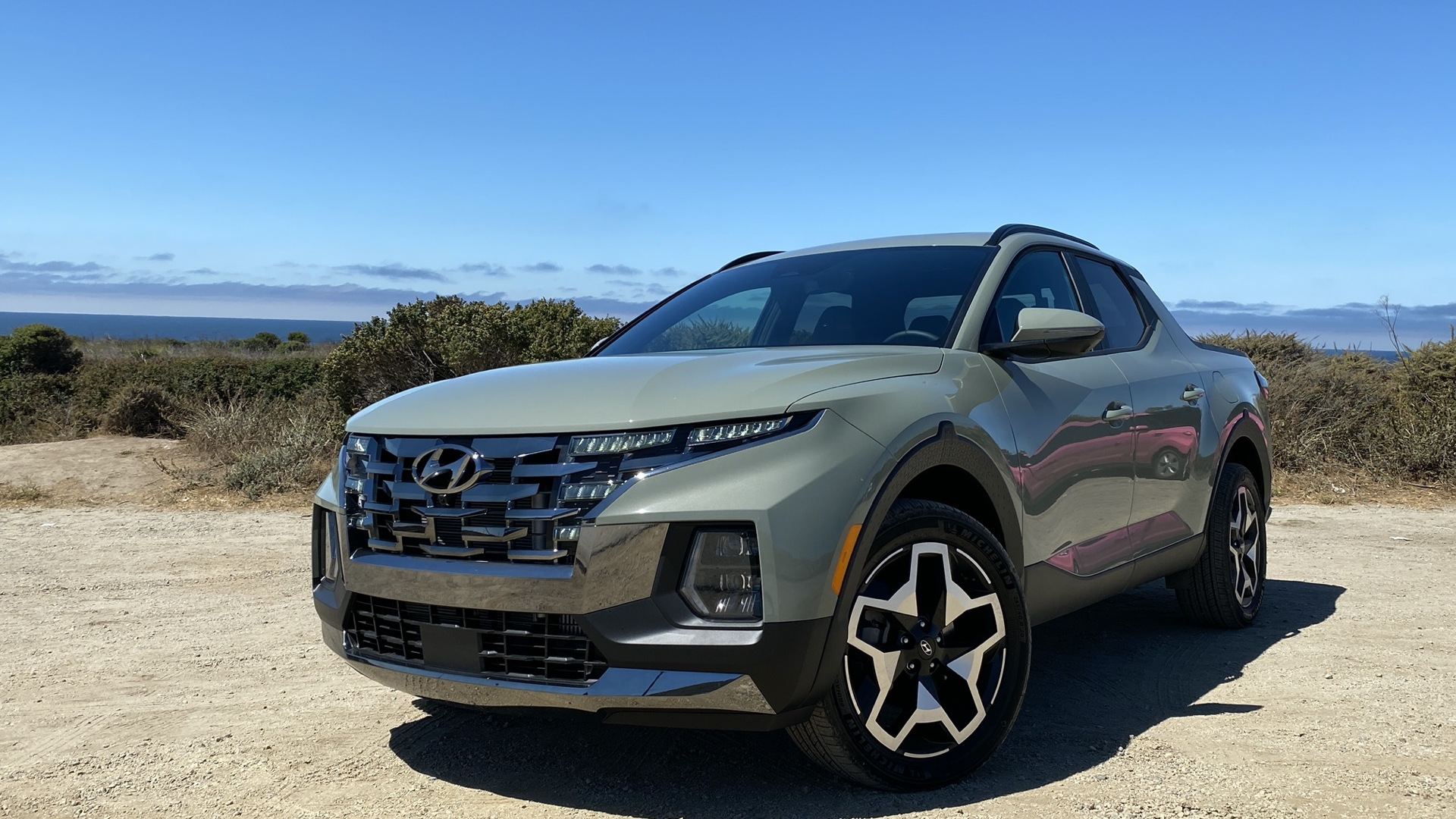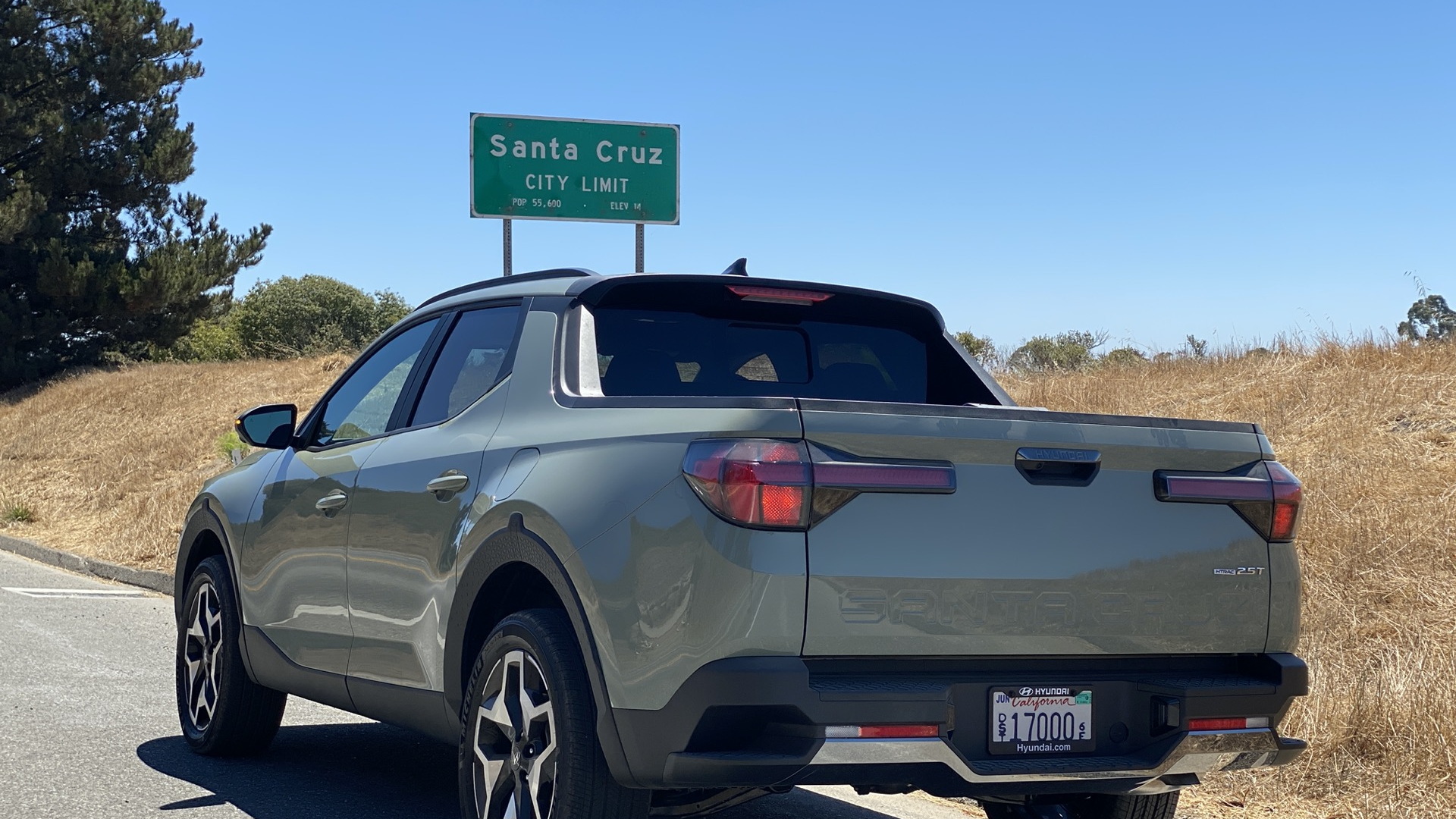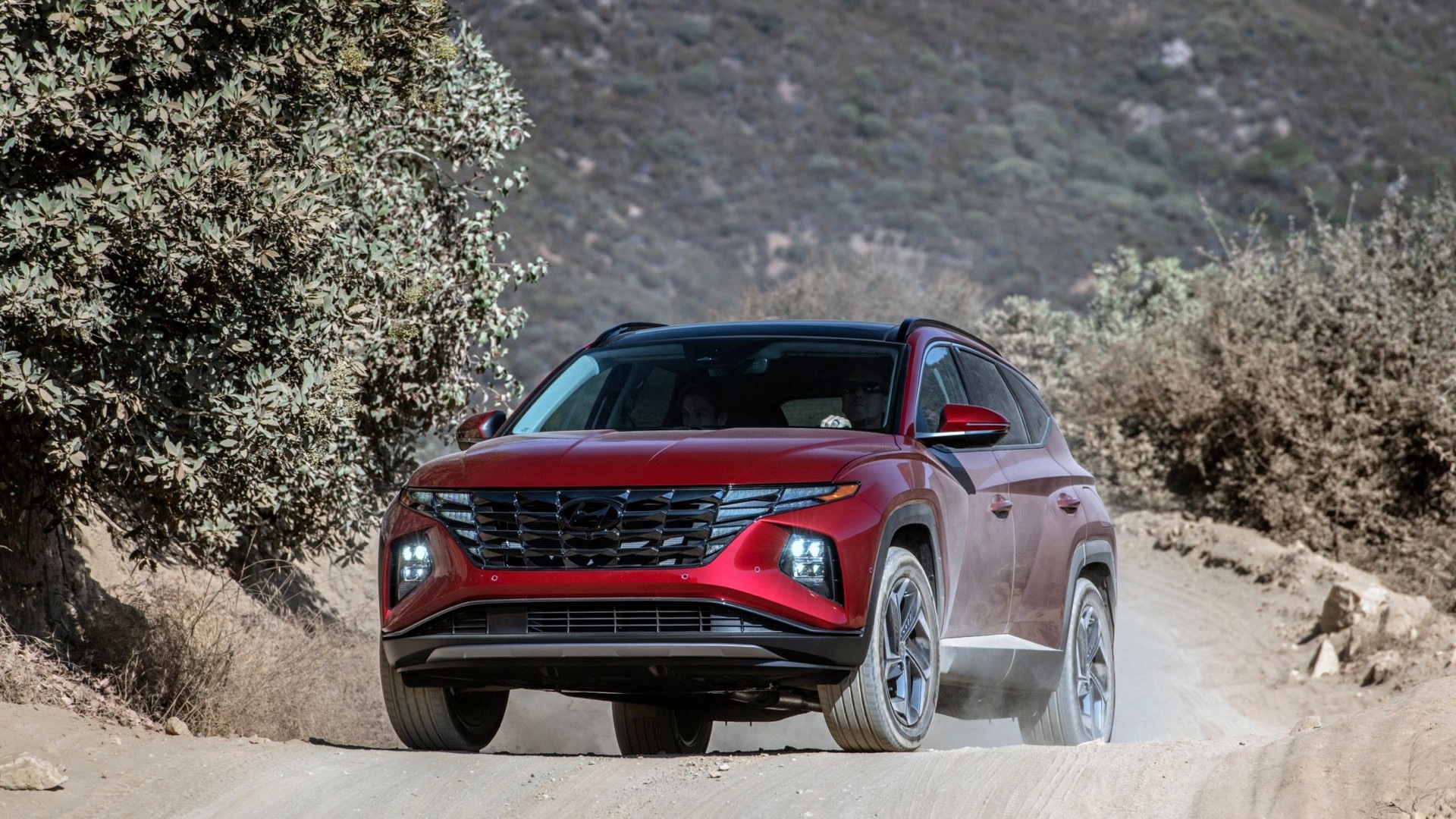Some questions divide us: Is there a God? Is a hotdog a sandwich? Is the 2022 Hyundai Santa Cruz a pickup truck?
If bread makes a sandwich a sandwich, then it stands to reason that a bed makes a pickup truck a pickup. The bed is where the similarities between the Santa Cruz and every other pickup truck end, however.
Based on the redesigned 2022 Hyundai Tucson and its unibody platform, but competing in a resurrected small pickup truck segment headlined by the 2022 Ford Maverick, the four-door Santa Cruz most resembles the short-lived Subaru Baja from 20 years ago. After spending the day driving the crossup along the central California coast into its namesake mountains, I’m convinced it’ll cater more to the Subaru Outback crowd of weekend do-it-yourselfers and outdoor adventurers than traditional truck buyers.
The Santa Cruz design puts the fun in funky and the fun in functional.
Hyundai kept us from the base 191-hp 2.5-liter inline-4 and instead shuffled drivers into an uprated 2.5-liter turbo-4 that generates 281 hp and 311 lb-ft of torque. Even though the Santa Cruz shares a platform with the Tucson, that turbo-4 shares a bay with the larger, heavier Santa Fe. The part sharing doesn’t stop there: the torque-rich turbo-4 pairs to an 8-speed dual-clutch automatic transmission used in Hyundai’s N performance vehicles; at launch the turbo-4 only comes with Hyundai’s all-wheel-drive system with a center locking differential used throughout the brand’s crossover lineup.
The combination works well in the Santa Cruz. Acceleration feels quick enough to estimate a mid-six second time from 0-60 mph in my top Limited trim. A bit of excusable turbo lag gives way to max torque coming on at 1,700 rpm, and in Sport mode the 8-speed stays in the rev range for plentiful power when called upon, or the transmission can be overridden with paddle shifters. The Santa Cruz weighs about the same as the Santa Fe at 4,100 lb, but its smaller cabin proportions and taller ride height make it feel livelier. In Smart mode, the system predicts predictability, so unpredictable driving behavior can cause the transmission to hesitate.
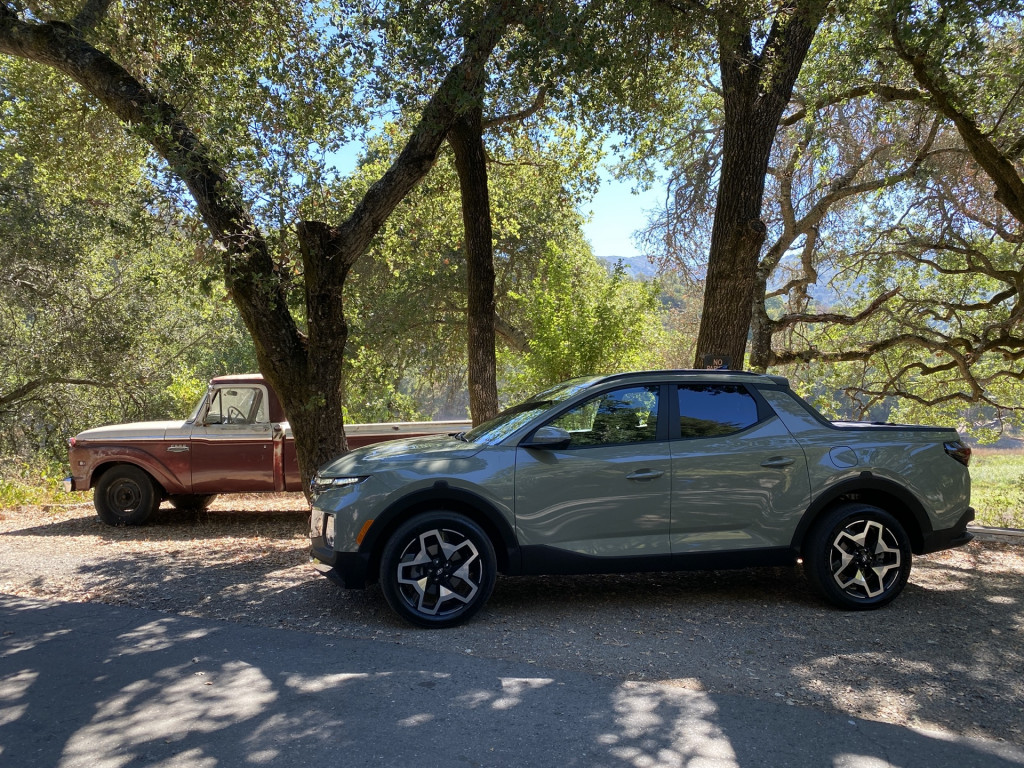
2022 Hyundai Santa Cruz

2022 Hyundai Santa Cruz

2022 Hyundai Santa Cruz
Hyundai’s adventure vehicle expertly balances road handling and ride quality. When cruising on the highway, torque goes to the front wheels for efficiency and the MacPherson front struts and multilink rear suspension soak up the road like a good crossover. Laminated acoustic glass helps keep the cabin quiet, but there’s no silencing the road noise at speed from the 20-inch alloy wheels standard on the Limited. If not for the manually sliding rear window, however, it would be easy to forget there’s a bed in back. In most situations, it doesn’t feel like a truck at all.
On narrower roads, like winding up and down mountain slopes flanked with giant redwoods, the Santa Cruz takes on a sportier character. Torque shifts to the rear axle when gassing it out of dips and banks in the road, and the beefier shocks from the Santa Fe conspire with the wide stance and self-leveling rear suspension to balance the load and keep the small truck planted. It has some body roll, but it felt like less than the Tucson, and even though I didn’t brake hard into curves for fear of hitting redwood trunks thicker than the vehicle, the plowing sensation endemic to front-drive-based crossovers seemed minimized.
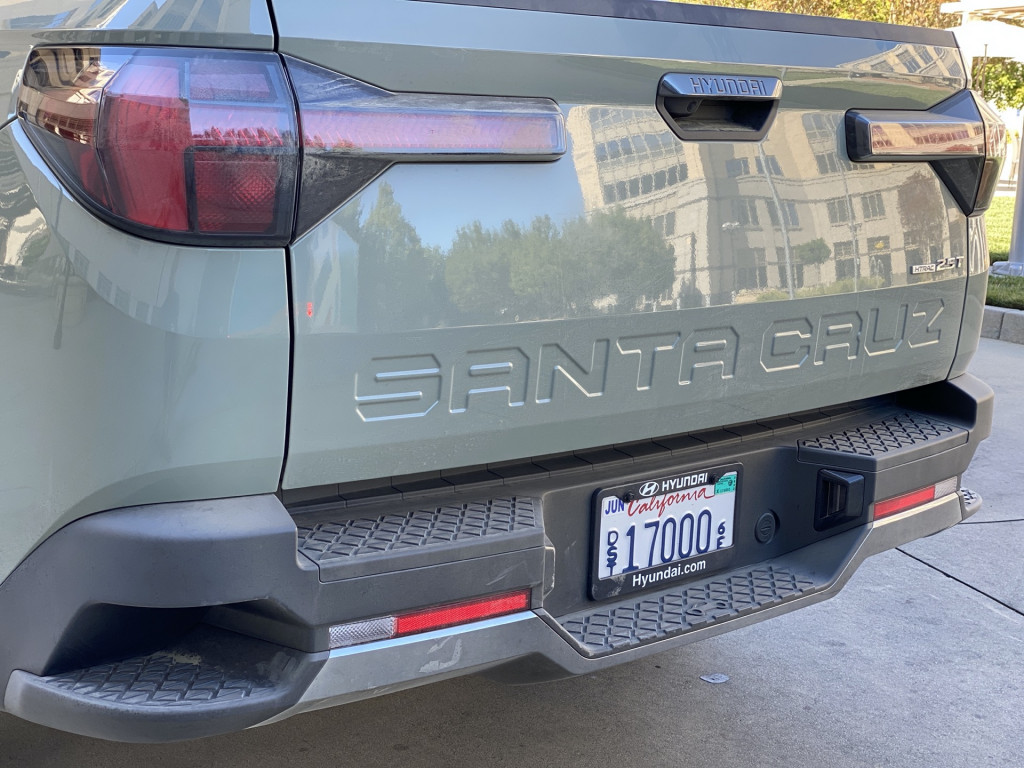
2022 Hyundai Santa Cruz

2022 Hyundai Santa Cruz
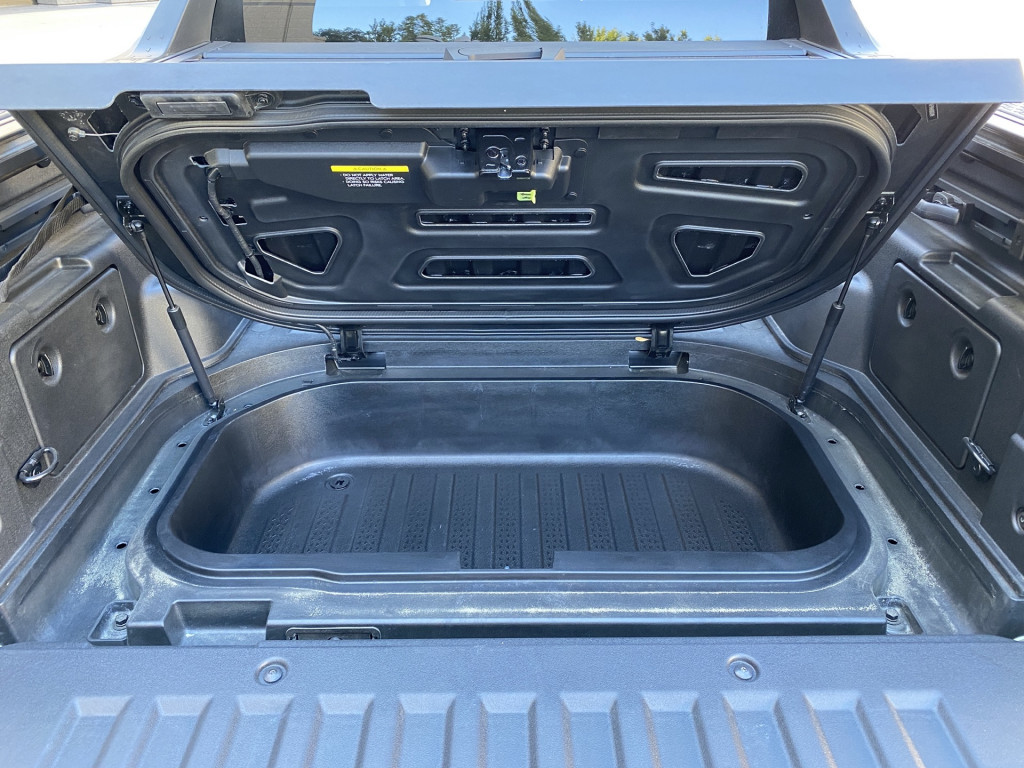
2022 Hyundai Santa Cruz

2022 Hyundai Santa Cruz
An off-road test was not offered, but on a gravelly ridge I tested the center locking differential that splits torque 50/50 for uphill climbs or slippery scenarios. It did what was promised, and as the driver’s rear wheel slipped on dry grass, the opposite wheel took on more of the torque and all of the gravel. Convinced that it could handle fire roads or rutted old mining paths, I turned off the stability control and kicked up rooster tails of chalk dust. It was fun enough to fuel autocross dreams, and that’s where it became most apparent that Hyundai wants Outback buyers for its new Santa Cruz.
Even though I didn’t off-road it, the specs reveal an obvious benchmark. The Santa Cruz has a Subaru Outback-like 8.6 inches of ground clearance (8.7 inches in the Outback), a breakover angle of 18.6 degrees and approach and departure angles of 17.5 and 23.2 degrees, respectively (19.4/18.6/21.7 in the Outback). An available surround-view camera system with all the views helps avoid obstacles while off-roading.
The bed and flip-up rear seats ensure that getting gear in and out is easier than strapping anything into roof racks (220-lb capacity on the Santa Cruz). Five step surfaces on the rear bumper, including corner steps like on the Chevy Colorado, make getting in and out of the bed easy. The bed is shorter than the Maverick’s, both in height and length, and the lower part of the bed measures about four inches longer than the 48.4-inch top part. Hyundai says four bikes can fit with the front wheels hanging over the tailgate, or 4x8 sheets of plywood can fit above the wheel wells when strapped in with the tailgate down. The tailgate folds down with a fob or handle button push, and extends the bed by nearly three inches more than the Maverick’s with its gate down. Both tailgates can be adjusted between the horizontal or vertical position. The truck itself is also more than 2.0 inches wider and 2.0 inches shorter than the Ford.

2022 Hyundai Santa Cruz

2022 Hyundai Santa Cruz

2022 Hyundai Santa Cruz
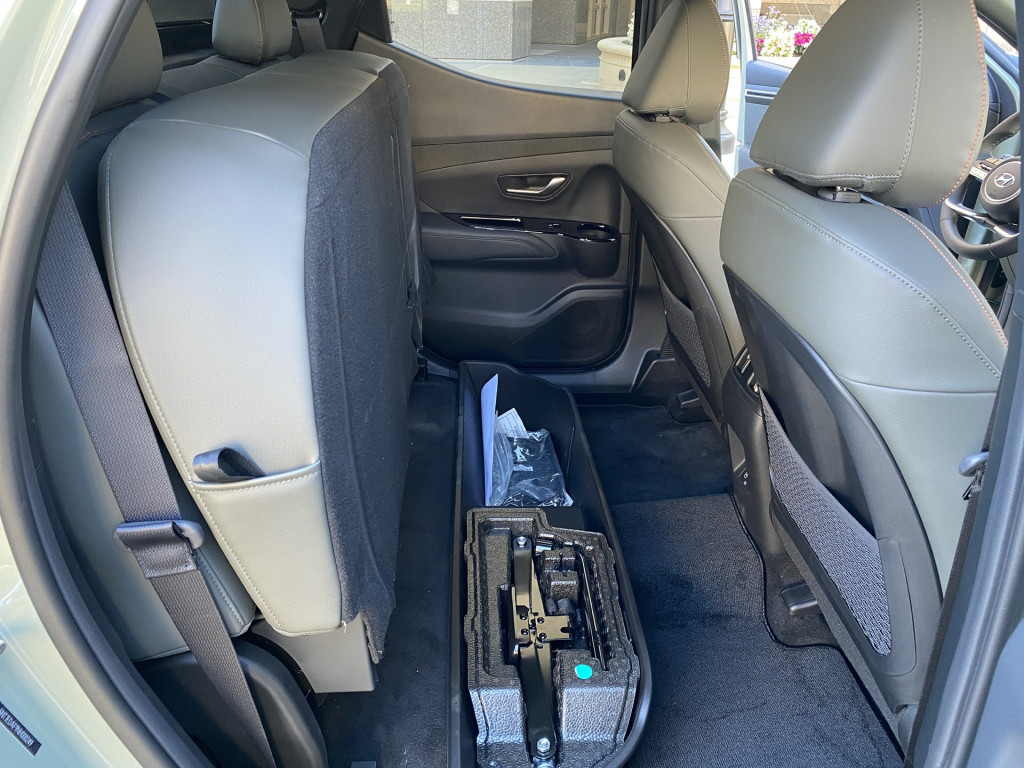
2022 Hyundai Santa Cruz
To secure the max 660 lb of payload in back, the Santa Cruz comes with six tie-downs and four D-rings to secure items, while twin storage boxes and one 115-volt outlet simplify camping needs. Total payload in the cab and bed ranges from 1,568 lb in the Limited AWD to 1,906 lb in the base SE with FWD. A 6.0-inch deep underbed storage box with a drain plug can stow nasty gear or fish (or beer) on ice. A factory-installed tonneau cover standard on SEL Activity trim and above retracts on a roller and can be pulled shut with a strap. It has a lockable handle, and Hyundai says the cover is water resistant, though not waterproof.
Clever storage areas continue inside, with 60/40-split rear seats that flip up to store gear on one side and an emergency flat kit on the other. With the seats down, there’s 36.5 inches of leg room and a tilt of 21 degrees so it doesn’t feel like sitting in a church pew. It’s smaller than the Tucson but roomier than the Maverick.
2022 Hyundai Santa Cruz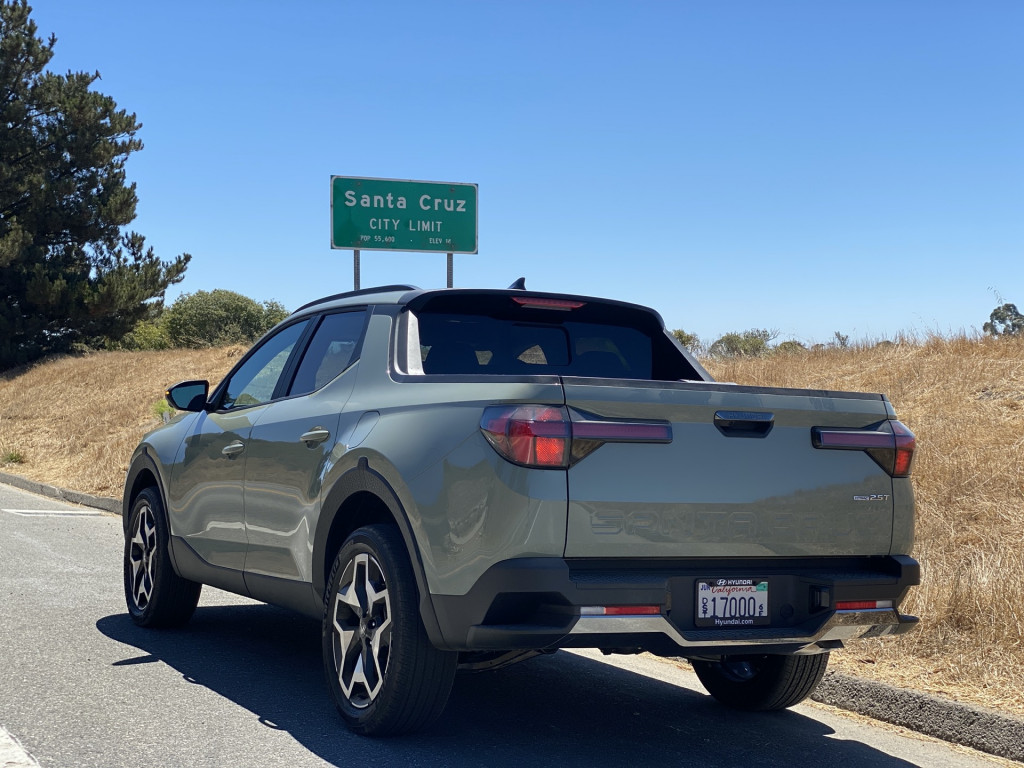
Up front, the Santa Cruz looks a lot like the Tucson with its black-gloss 10.3 inch touchscreen (8.0-inch screen is standard) and climate control panel.
Hyundai says the Santa Cruz can tow up to 5,000 lb with AWD, though I would’ve liked a demonstration to see how the self-leveling suspension balances out a load. Trailer sway control comes standard, as does prewiring for a 7-pin harness on top trims.
I look forward to a deeper dive on towing and off-roading next time I encounter a Santa Cruz, but for now it occupies a unique and compelling space. It’s more fun than a crossover, more nimble than a pickup truck, and more flexible than an Outback. Classify the 2022 Hyundai Santa Cruz however you want, but keep in mind that a hot dog falls under the genus of sandwich.
Pricing starts at $25,175, including destination.
Hyundai paid for airfare, room, and board to bring you this firsthand report.

